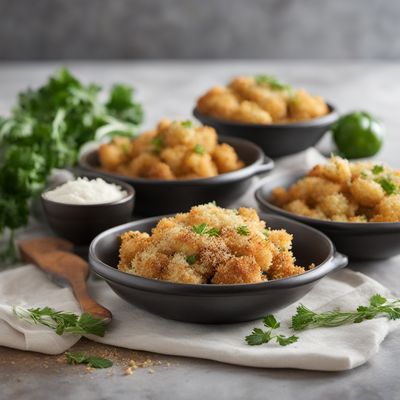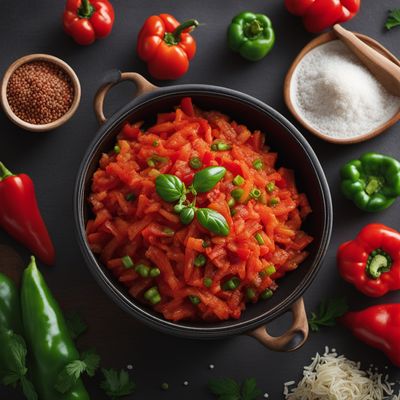
Ingredient
Cauliflowers
The Versatile Cauliflower: A Blank Canvas for Culinary Creativity
Cauliflowers, part of the cruciferous vegetable family, are known for their distinctive appearance, with tightly packed florets forming a compact head. They have a mild, slightly sweet flavor and a firm yet tender texture when cooked. Cauliflowers come in different colors, including white, orange, purple, and green, each offering its own subtle variations in taste and texture. This cruciferous vegetable is a staple in many cuisines and can be enjoyed raw, steamed, roasted, or even mashed.
Origins and history
Cauliflowers have a long history dating back to ancient times, with evidence of their cultivation in the Mediterranean region over 2,000 years ago. They were introduced to Europe in the 16th century and gained popularity as a nutritious and versatile vegetable. Cauliflowers have since become a beloved ingredient in various global cuisines, from Indian curries to Italian pasta dishes. Today, they are widely cultivated and enjoyed worldwide.
Nutritional information
Cauliflowers are low in calories and carbohydrates, making them a nutritious choice for those watching their calorie intake or following a low-carb diet. They are also a good source of fiber, vitamins C and K, and several minerals, including potassium and manganese.
Allergens
Cauliflowers may cause allergic reactions in individuals with a known sensitivity to cruciferous vegetables. Symptoms may include digestive discomfort, skin rashes, or respiratory issues. If you have a known allergy, it is best to avoid consuming cauliflowers or consult with a healthcare professional.
How to select
When selecting cauliflowers, look for heads that are firm, compact, and free from blemishes or discoloration. The leaves should be vibrant and tightly wrapped around the head. Avoid cauliflowers with soft spots or signs of mold. Additionally, choose the color variety that suits your recipe or personal preference, whether it's the classic white cauliflower or the vibrant purple or orange varieties.
Storage recommendations
To extend the shelf life of cauliflowers, store them unwashed in a perforated plastic bag or a loosely wrapped damp paper towel in the refrigerator's crisper drawer. Proper storage can help maintain their freshness for up to a week. However, it is best to consume cauliflowers as soon as possible for the best flavor and texture.
How to produce
Cauliflowers can be grown in home gardens with proper care and attention. They thrive in cool weather and require well-drained soil and full sun exposure. Start by planting cauliflower seedlings or transplants in early spring or late summer, depending on your climate. Regular watering and fertilization will help promote healthy growth and development.
Preparation tips
Cauliflowers can be prepared in numerous ways, making them a versatile ingredient in the kitchen. They can be enjoyed raw in salads, pickled, steamed, roasted, sautéed, or even mashed as a low-carb alternative to mashed potatoes. When roasting or sautéing, consider adding spices or seasonings to enhance their flavor. For a unique twist, try making cauliflower rice or using cauliflower florets as a pizza crust substitute.
Substitutions
Broccoli can be used as a suitable substitute for cauliflowers, offering a similar texture and flavor profile. However, keep in mind that broccoli has a stronger taste, so adjust the seasoning accordingly. Another option is Romanesco broccoli, which has a similar appearance to cauliflowers but offers a slightly nuttier flavor.
Culinary uses
Cauliflowers are incredibly versatile and can be used in a wide range of culinary applications. They are commonly used in stir-fries, curries, soups, salads, and side dishes. Cauliflower florets can also be breaded and fried to create a crispy and flavorful appetizer. Additionally, cauliflower rice has gained popularity as a low-carb alternative to traditional rice in various dishes.
Availability
Cauliflowers are cultivated and available in many regions worldwide, including North America, Europe, Asia, and Australia. They are commonly found in grocery stores, farmers markets, and supermarkets throughout the year.
More ingredients from this category
Recipes using Cauliflowers » Browse all

Cretan-style Sautéed Cauliflower
Mediterranean Cauliflower Delight

Norwegian Cauliflower Salad with Radishes
Scandinavian Delight: Creamy Cauliflower Salad with a Radish Twist

Insalata di Rinforzo with a Twist
Mediterranean Delight: Reinvented Insalata di Rinforzo

Crispy Parmesan Roasted Cauliflower
Golden Cauliflower Delight

Creamy Norwegian Cauliflower Soup
Nordic Delight: Creamy Cauliflower Soup with a Norwegian Twist

Bangladeshi-style Cocido
Spiced and Flavorful Cocido: A Bangladeshi Twist on a Spanish Classic

Albanian-style Pickled Vegetable Relish
Zesty Medley: Albanian Pickled Vegetable Relish

Afghan-style Yellow Curry
Saffron-infused Afghan Curry Delight

Gobi Matar Curry
Spiced Cauliflower and Peas Delight

Indian Spiced Pickles
Tangy and Spicy Indian Pickles: A Burst of Flavors

Greek-style Braised Cauliflower
Mediterranean Cauliflower Delight

Croatian-inspired Vegetarian Feast
A Croatian Twist on the Indian Sadhya: A Vegetarian Feast to Savor
